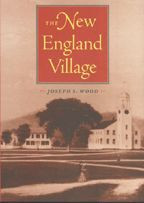
Reviews
McNamara embeds an architectural history of the transformation of civic space in an argument that stresses the causal imperatives of professionalization... From Tavern to Courthouse is to be recommended.
McNamara's thesis... is convincing.
An excellent work that expands our understanding of public space and professionalization in eighteenth and early nineteenth century Massachusetts.
McNamara's explication of legal and architectural change, adroitly employing the history of professionalization, rituals, landscapes, and the law, deserves a wide readership.
Will remain as a highly valuable resource for those studying early American law.
In this compact but generously illustrated study, Martha J. McNamara puts the study of public space in early America on an entirely new plane. Charting the architectural transition from town houses to courthouses, she argues that attorneys needed architects as surely as architects saw a new market for their skills in innovative courthouse designs. Never before has the dynamic dependence of a new occupational class and its material culture been opened to view. This book offers an argument of power and subtlety, and it will be widely read.
From Tavern to Courthouse brings American studies scholarship to bear on the ways in which lawyers gained hegemony over legal matters as they professionalized their services, in part, through the construction of purpose-built courthouses, prisons, and related commerce-free townscapes. Martha McNamara draws together a number of surprising cultural strands—everything from the relationship of legal landscapes to matchmaking and the role of coffeehouses to the parallel track of professionalization among architects and the effects of fugitive slaves on courthouse life—to support her richly-textured reading of this transformation.
Book Details
List of Illustrations
Acknowledgements
Introducion. Lawyers, Architects, and the Redefinition of Public Space
Chapter 1. "Summoned among Rogues and Thieves": Court Settings and Procedures at Century's
List of Illustrations
Acknowledgements
Introducion. Lawyers, Architects, and the Redefinition of Public Space
Chapter 1. "Summoned among Rogues and Thieves": Court Settings and Procedures at Century's End
Chapter 2. Constructing a Profession: Lawyers, Courts, and Commerce in Eighteenth-Century Massachusetts
Chapter 3. "A Grand Procession of Court and Bar": Judicial Landscapes and the Representation of Legal Power
Chapter 4. Housing the Courts: Law and Architecture in the Early Republic
Epilogue. Slaves and Scriveners: The Assault on Professional Authority
Notes
Bibliography
Index





